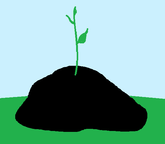 This issue: Building Soil Naturally Wildwood Garden Starting to Resemble Design Kids Workshop June 9, 2012 The Basics Of Building Soil Naturally Every spring I have people ask me where the cheapest soil in town can be found. Of course I let them know the company that sells it at the lowest cost (that I am aware of). However, what I should be telling people is that the cheapest soil is actually in your own backyard--or at least it can be made there if you’re willing to be patient. In permaculture, just as in nature, good soil is made by two directional energies: one flows from deep beneath the soil toward the surface, and the other flows from plant branches downward to land on that surface. In other words, all the natural mulch such as leaf litter, flower petals, and other plants materials that land on the ground will decay and turn into a fluffy layer of humus. At the same time, certain plant roots plunge deep into the earth to mine minerals and bring them up to the surface. If we allow those plants to eventually decay, the minerals will be left there for other plants to access them. A technique to speed this up is called “chop and drop”, where we allow these thick or long-rooted plants to grow to a certain size and then chop them down and leave the greens on the soil. The roots decay into “fingers” of humus and the greens also decay on top of the soil. The idea is, you throw nothing away; everything is returned to the soil. Helping the decay process are soil microbes, which digest organic matter and return it to the soil in hummus form. If your garden is used to constant input of pesticides and chemical fertilizers, there will not be as many microbes available for this process. This is where patience is vital. The soil bacteria and macrofauna will multiply if left to do so, making the whole soil creation process a lot more efficient in subsequent months and years. The problem is that the type of gardening I’ve talked about so far mainly applies to perennial beds. As most people like to do vegetables, which are usually annuals, nutrients are constantly being removed without being replaced. So a bed that is 100 percent annuals would require a whole lot of compost or fertilizer of some sort to replenish those nutrients. This is why we always plant polycultures—the more plants and plant types the better. In nature you will never find an ecology made up of only annuals. In addition, perennial gardening does not mean that we need to stick to fruits. There are many varieties of vegetables which come back year after year. Examples of these are: Asparagus (zone 3), globe artichoke (zone 3), fiddleheads (zone 3), Chinese mountain yam (Zone 5), wild leeks (zone 3-4), garlic chives (zone 3), lovage (zone 3), Turkish rocket (zone 5), Groundnut (Apios Americana) (zone 3), Good King Henry(zone 3) and Rhubarb (zone 1), just to name a few. There are many more to add to this list, and many more to experiment with. If you still want to interplant some annual veggies to the landscape, then go for it. Some of us find it a little difficult to live without our crunchy carrots, etc. Just remember that when you pull the entire plant from the ground, the nutrients must be replaced in some way. If those carrots are surrounded by perennials raining organic matter all around them, then it will be less difficult to replenish soil. 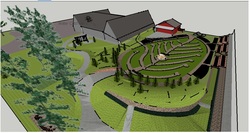 Wildwood Garden Starting to Resemble Design Members of the community of Wildwood have been hard at work since about mid-April on their community garden which uses permaculture strategies and design throughout. There are about 500 square feet of terraced wicking bed space so far which will drain into the swales of the lower leaf-shaped garden. There is much more work to be completed, but it will be done in stages. Some wicking beds are ready for planting, and the remainder should be near completion this weekend. Anyone wishing to volunteer and pick up a few pointers on permaculture is encouraged to drop by especially on weekends 4411 Spruce Drive Southwest, Calgary, AB 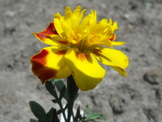 Gardening Workshop for Kids! On the morning of Saturday, June 9 I will be doing a free children's workshop with "Kids Grow" at the West Hillhurst Community Garden where children will learn a little about plant guilds and be encouraged to participate in helping plant a small plot in the area. For more information, please contact Tamara with Kids Grow email: [email protected] or Ted Bahr with Prairie Sage Permaculture. Thanks and Happy Growing!
1 Comment
Your comment will be posted after it is approved.
Leave a Reply. |
Author:Ted Bahr is the founder of Prairie Sage Permaculture. MORE Archives
April 2023
Categories
All
|

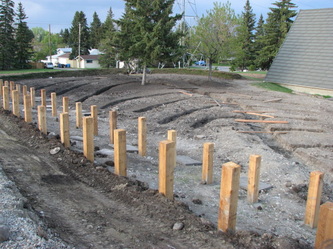
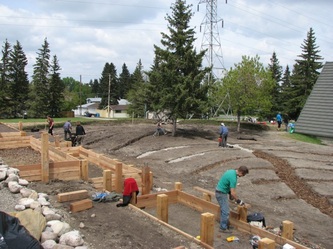

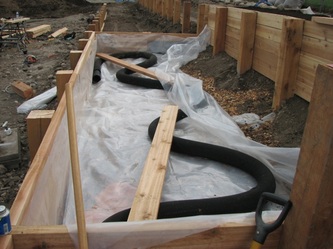
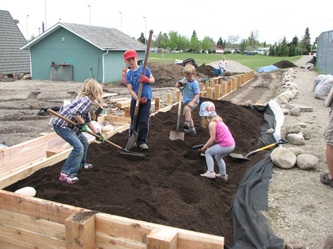
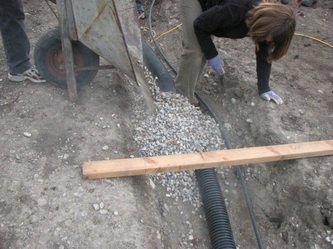
 RSS Feed
RSS Feed
